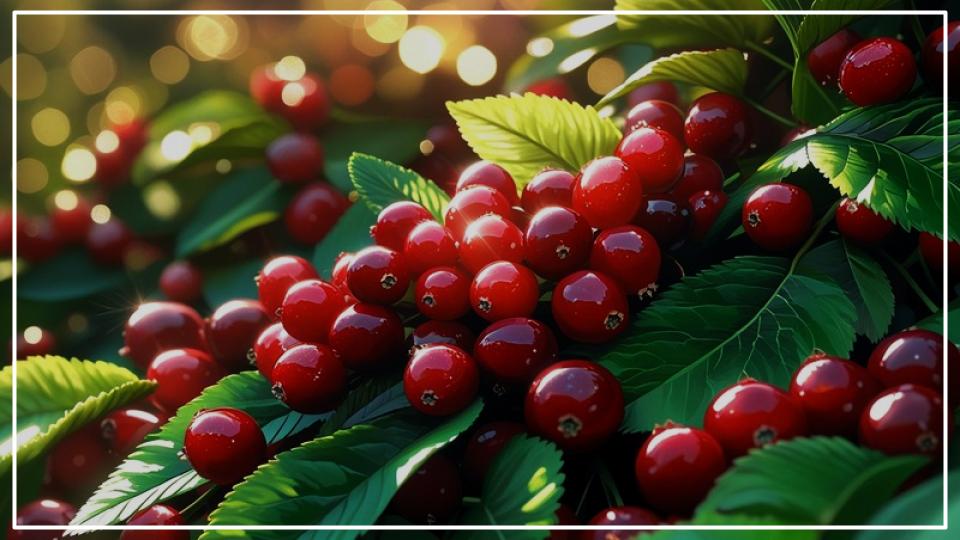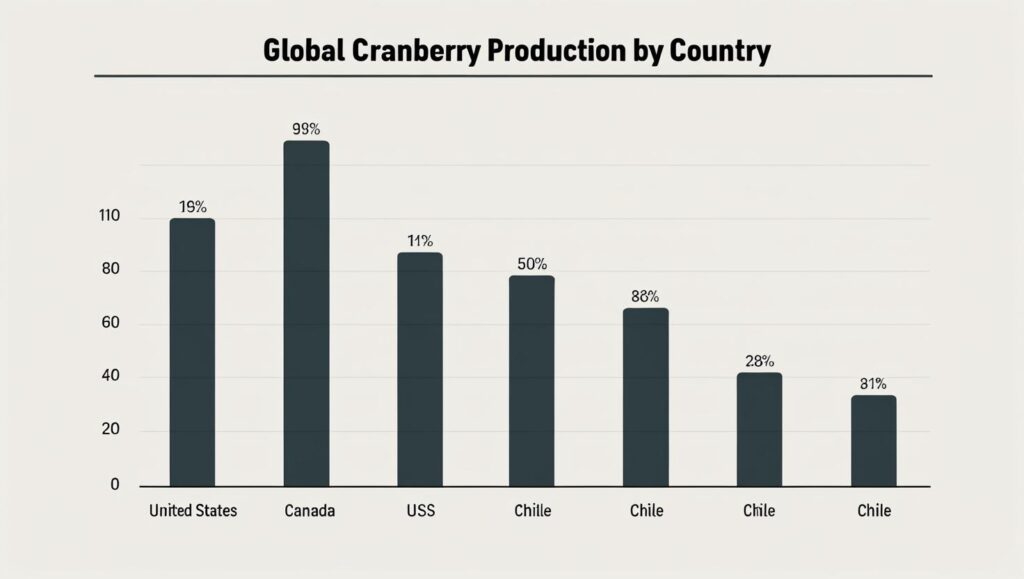
From the deep red hue of holiday sauces to the tart burst in juices and dried fruit snacks, the cranberry is a globally recognized fruit. Yet, the vast majority of this hardy berry originates from a surprisingly concentrated geographical area. The story of global cranberry production is overwhelmingly a North American one, with the United States and Canada collectively growing more than 95% of the world’s supply, a dominance shaped by unique geography, specialized farming, and a powerful cooperative industry structure.
Key Insights: The Cranberry World at a Glance
| Key Fact | Detail/Statistic |
| North American Dominance | The U.S. and Canada produce the vast majority of all cranberries worldwide. |
| Top Producer | The United States leads the world, with annual output over 365,000 metric tons. |
| The Cranberry King | Wisconsin alone accounts for over 50% of the entire world’s cranberry supply. |
| Southern Hemisphere Player | Chile is the third-largest producer, critical for off-season supply chains. |
The Titans of the Bog: North America’s Leadership
The heartland of the cranberry industry lies in the acidic, sandy soils of specific North American regions. The American cranberry, Vaccinium macrocarpon, is native to this continent and requires a unique set of conditions—including a sandy or peaty soil, an abundant fresh water supply, and a cold winter period for dormancy—that a few states and provinces possess in ideal measure.
According to data from the U.S. Department of Agriculture (USDA) and Statistics Canada, these two nations consistently dwarf all other producers. While minor cultivation exists in countries like Chile, Turkey, and Azerbaijan, their output is a small fraction of the North American cranberry harvest.
Wisconsin: The Uncontested Cranberry Capital
No single region has a greater impact on global cranberry production than the state of Wisconsin. Producing over 60% of the U.S. crop and more than half of the world’s total, Wisconsin’s output is staggering. The state’s central and northern counties are home to over 21,000 acres of cranberry marshes, an industry that contributes nearly $1 billion annually to the state’s economy, as reported by the University of Wisconsin-Extension.
“The history of cranberry cultivation in Wisconsin dates back to the 1860s,” said a spokesperson for the Wisconsin State Cranberry Growers Association. “Generations of farmers have perfected the methods for growing high-quality fruit that supplies both the American market and is a cornerstone of U.S. cranberry exports.”
Massachusetts, the historical cradle of cranberry cultivation, remains a significant producer, followed by New Jersey, Oregon, and Washington.

Canada’s Growing Influence
Just across the border, Canada stands as the world’s second-largest cranberry producer. The province of Quebec is the center of the Canadian industry, frequently experiencing record-breaking harvests. According to the Quebec Cranberry Growers Association (APCQ), the province’s output has grown substantially, solidifying Canada’s role as a major player.
British Columbia is the country’s other key growing region. Together, these provinces not only satisfy domestic demand but also contribute significantly to the international market, with major exports flowing to the United States and Europe.
Beyond North America: Other Key Producers
While North America is the clear leader, other countries play strategic roles in the year-round availability of cranberry products.
Chile’s Southern Hemisphere Advantage
The most significant producer outside of North America is Chile. Its position in the Southern Hemisphere gives it a distinct market advantage: its cranberry harvest takes place from March to May, the opposite of the North American autumn harvest. This counter-seasonal production allows for a steadier supply of cranberries for processing into dried fruit and juice concentrates for the global market. Reports from market analysis firms show Chile’s export volume is growing, particularly to Europe and Asia.
Economic and Environmental Factors
The modern cranberry industry is a highly organized agricultural sector. Much of the crop is handled by large grower-owned cooperatives, with Ocean Spray being the most prominent. This cooperative, comprising over 700 grower families in the U.S., Canada, and Chile, processes and markets a substantial portion of the world’s cranberries, turning the raw fruit into shelf-stable juices, sauces, and sweetened dried cranberries.
However, the industry faces modern challenges. A report from the University of Maine’s Cooperative Extension highlights the threats posed by climate change. Warmer winters risk depriving cranberry vines of the necessary chilling hours for proper budding, while hotter summers can lead to “berry scalding,” damaging the fruit. Furthermore, changes in precipitation patterns can impact the delicate water management essential for flooding bogs during the cranberry harvest.
Growers are actively adapting with new technologies and resilient fruit varieties, but these environmental pressures represent a significant long-term concern for the stability of global cranberry production. The industry’s future rests on its ability to innovate in the face of a changing climate, ensuring the world’s bogs remain productive for generations to come.
Read More
The Cream of the Crop: Exploring the Country Famous for Producing the Most Avocados
